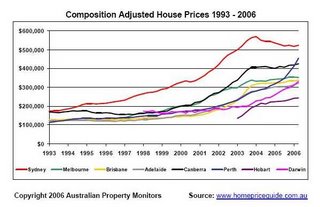04 November 2006
NewScientistFred Pearce
KEVIN TRENBERTH reckons he is a marked man. He has argued that last year's devastating Atlantic hurricane season, which spawned hurricane Katrina, was linked to global warming. For the many politicians and minority of scientists who insist there is no evidence for any such link, Trenberth's views are unacceptable and some have called for him step down from an international panel studying climate change. "The attacks on me are clearly designed to get me fired or to resign," says Trenberth.
The attacks fit a familiar pattern. Sceptics have also set their sights on scientists who have spoken out about the accelerating meltdown of the ice sheets in Greenland and Antarctica and the thawing of the planet's permafrost. These concerns will be addressed in the next report by the Intergovernmental Panel on Climate Change (IPCC), the global organisation created by the UN in 1988 to assess the risks of human-induced climate change. Every time one of these assessments is released, about once every five years, some of the American scientists who have played a part in producing it become the targets of concerted attacks apparently designed to bring down their reputations and careers. At stake is the credibility of scientists who fear our planet is hurtling towards disaster and want to warn the public in the US and beyond.
So when the next IPCC report is released in February 2007, who will be the targets and why? When New Scientist spoke to researchers on both sides of the climate divide it became clear that they are ready for a showdown. If the acrimony were to become so intense that American scientists were forced to stop helping in the preparation of IPCC reports, it could seriously dent the organisation and rob the world of some significant voices in the climate change debate.
One of those who knows only too well what it is like to come under attack from climate change sceptics is Ben Santer of the Lawrence Livermore Laboratory in California. The lead author of a chapter in the 1995 IPCC report that talked for the first time about the "discernible human influence on global climate", he was savaged by sceptics and accused of introducing this wording without consulting colleagues who had helped write the chapter. One sceptic called it the "most disturbing corruption of the peer-review process in 60 years". Another accused him of "scientific cleansing" - at a time when the phrase "ethnic cleansing" was synonymous with genocide in Bosnia. The IPCC investigated and dismissed the allegations as baseless.
Another scientist to suffer the ire of the sceptics was
Michael Mann of Pennsylvania State University in University Park. He was attacked after the IPCC assessment in 2001, which highlighted his "
hockey stick" graph showing that temperatures began a rapid rise in recent decades and are now higher than at any time over the past thousand years. The sceptics accused Mann of cherry-picking his data and criticised him for refusing to disclose his statistical methods which, they claimed, biased the study to show recent warming (New Scientist, 18 March, p 40). Last year, Texas Republican Congressman Joe Barton, chair of the House Committee on Energy and Commerce, ordered Mann to provide the committee with voluminous details of his working procedures, computer programs and past funding. Barton's demands were widely condemned by fellow scientists and on Capitol Hill. "There are people who believe that if they bring down Mike Mann, they can bring down the IPCC," said Santer at the time. Mann's findings, which will be endorsed in the new IPCC report, have since been replicated by other studies.
Santer says, however, that he expects attacks to continue on other fronts.
"There is a strategy to single out individuals, tarnish them and try to bring the whole of the science into disrepute," he says. "And Kevin [Trenberth] is a likely target." Mann agrees that the scientists behind the upcoming IPCC report are in for a rough ride. "There is already an orchestrated campaign against the IPCC by climate change contrarians," he says.
“There is a strategy to single out individuals, tarnish them and try to bring the whole of the science into disreputeBen Santer, Lawrence Livermore Laboratory”
The "contrarians" include scientists and politicians who are sceptical of the scientific evidence for climate change. Some of those who spoke to New Scientist insist that they are not planning character assassinations, and intend merely to engage in robust scientific debate, not least by challenging the IPCC's status as the arbiter of truth on climate change.
Many of the IPCC's authors, some of whom asked not to be named, say this is a smokescreen. They claim there is an extensive network of lobby groups and scientists involved in making the case against the IPCC and its reports. Automobile, coal and oil companies have coordinated and funded past attacks on them, the scientists say. Sometimes this has been done through Washington lobby groups such as the Competitive Enterprise Institute (CEI), whose officers include Myron Ebell, a former climate negotiator for George W. Bush's administration. Recently, the CEI made television advertisements arguing against climate change, one of which ended with the words: "Carbon dioxide, they call it pollution, we call it life." CEI's past funders include ExxonMobil, General Motors and the Ford Motor Company.
The money trailSome sceptical scientists are funded directly by industry. In July, The Washington Post published a leaked letter from the Intermountain Rural Electric Association (IREA), an energy company based in Colorado, that exhorted power companies to support the work of the prominent sceptic Pat Michaels of the University of Virginia, Charlottesville. Worried about the potential cost of cleaning up coal-fired power plants to reduce their CO2 emissions, IREA's general manager, Stanley Lewandowski, wrote: "We believe that it is necessary to support the scientific community that is willing to stand up against the alarmists... In February this year, IREA alone contributed $100,000 to Dr Michaels."
So what is this money buying? For one, an ability to coordinate responses to the IPCC reports. Michaels told New Scientist that a flashpoint in the upcoming report could be hurricanes. Trenberth, who is the head of climate analysis at the National Center for Atmospheric Research (NCAR) in Boulder, Colorado, has angered the IPCC's critics by supporting the idea of a link between global warming and the intensity of hurricanes. The sceptics insist there is no published evidence to back this up. Trenberth says he is simply putting two established facts together: "Sea-surface temperature is rising because of global warming, and high sea-surface temperatures make for more intense storms."
In the aftermath of hurricane Katrina, and with a US administration that has a record of hostility to concerns about climate change, Trenberth's statements are political dynamite. "I suspect the sceptics will want to try and dismantle the argument that there is a link," Mann says. Santer agrees: "If I was an industry-funded sceptic, I'd hit that area hard, for sure." Trenberth himself fears the worst. "I would not be surprised if the hurricane aspect of the report is targeted, along with my own role," he says. "But I am proud of what we have achieved."
One lead author of the chapter on hurricanes told New Scientist that it will include discussion of two papers published last year in Science and Nature, both of which showed that the frequency of the most intense hurricanes has increased in recent years. Even if Trenberth and his co-authors do not directly attribute this to global warming, the mere mention of these papers in the context of climate change is likely to provoke criticism.
Trenberth's opinions have already alienated his co-author Chris Landsea of the National Oceanic and Atmospheric Administration's Atlantic Oceanographic and Meteorological Laboratory in Florida. Landsea disputed Trenberth's view, arguing that older measurements made before the era of satellite observation were not reliable enough to make the claim stick (New Scientist, 3 December 2005, p 36). When IPCC chiefs refused to censure Trenberth for his remarks directly linking last year's hurricanes to climate change, Landsea resigned, claiming that the IPCC had been "subverted, its neutrality lost".
Another sensitive area is the concern that existing models of ice sheets on Greenland and Antarctica massively underestimate future melting and consequent sea-level rise. "Our understanding of the dynamics of ice-sheet destruction has completely changed in the last five years," says Richard Alley of Penn State University, a lead author of the chapter on ice sheets who expects to find himself in the firing line over this issue. "We used to think it would take 10,000 years for melting to penetrate to the bottom of the ice sheet. But now we know it can take just 10 seconds," he says.
The rethink has come from the discovery that when surface water from melting ice drains down though crevasses it can lubricate the join between ice and bedrock. This mechanism appears to explain the faster discharge of ice from Greenland into the Atlantic, but it has yet to be incorporated into ice-sheet models, which still assume that the limiting factor is the rate at which heat penetrates through solid ice.
Michaels dismisses the idea of more rapid loss as "hysteria", and has thrown down a challenge to the IPCC to justify any change to the ice-sheet models. "[The IPCC] criticise people like me for saying the models are wrong, so it's going to be really interesting to see how they respond when their own people say the models are wrong." Alley, however, points out that leading glaciologists mostly agree that the current generation of ice-sheet models are wanting, whereas climatologists are mostly happy with their models.
A third focus for debate will be the way the IPCC treats recent reports of climate change disrupting the natural carbon cycle more than anticipated. This has to do with the release of large amounts of CO2 from rainforests and soils, and methane from permafrost and beneath continental shelves, possibly speeding up global warming. "These are factors not included in the current models, which may cause us to underestimate warming," Mann says.
Some insiders suggest that the IPCC may be more cautious in its upcoming report than it has been in the past, but this is unlikely to placate climate-change sceptics. Roger Pielke of the University of Colorado, Boulder, accuses the IPCC leadership of "seeing their role as political advocates rather than honest brokers". And Michaels has set out to prove this (see "A taste for bad news?", below).
For the majority of climate scientists, who are convinced that global warming is a real and present danger, the most alarming outcome of this discord is that federal funding could be withdrawn from those who work on IPCC reports. Here too Trenberth may find himself caught in the headlights. The US Senate's Environment and Public Works Committee under its chairman James Inhofe has begun investigating NCAR, Trenberth's employer. Inhofe has repeatedly written to NCAR and other agencies demanding details about financial and contractual arrangements with their employees and with federal funding agencies such as the National Science Foundation (NSF). In a letter to the NSF in February, Inhofe said he needed the information to help him in "researching, analyzing and understanding the science of global climate change". Inhofe has a record of hostility to the idea of climate change, having asked on the Senate floor in July 2003: "Could it be that man-made global warming is the greatest hoax ever perpetrated on the American people? It sure sounds like it."
NCAR is not commenting on Inhofe's investigation, but many climate scientists contacted by New Scientist regard it as a tactic designed to intimidate those working on the IPCC report. "Inhofe's actions appear to be an effort to discourage leading US scientists from being involved in international scientific assessment processes such as the IPCC," Mann says.
“There appears to be an effort to discourage US scientists from being involved in international scientific assessment processesMichael Mann, Penn State University”
This is potentially disastrous for the IPCC. Out of 168 scientists listed as lead authors or reviewers involved in assessing the science of climate change, 38 are from the US - more than twice as many as the second-largest national grouping, the British.
IPCC scientists who spoke to New Scientist insist they are not trying to turn science into politics or to shut down genuine debate. They do, however, worry that their conclusions might be drowned out by some politically motivated and industry-funded sceptics. "I'd hate to see hundreds of people putting years of their lives into producing a report that is then trashed by these people for political ends," says Santer. "That is what happened in my case, and I felt very bad about it."
“The literature is intrinsically biased, and that means that the IPCC is also biasedPat Michaels, University of Virginia, Charlottesville”
From issue 2576 of New Scientist magazine, 04 November 2006, page 18-21A taste for bad news?Pat Michaels of the University of Virginia, Charlottesville, claims that climate research is biased towards pessimistic conclusions, and says he can prove it.
Michaels has analysed publications by climate scientists in the journals Nature and Science between mid-2005 and mid-2006. He found 115 articles of which 83 said that the likely impact of the greenhouse effect was going to be worse than previously suggested, 23 saw no change and only 9 said that things were not as bad as previously thought.
To most researchers this is solid evidence that the prognosis for the planet is worsening as new science comes in. Michaels rejects this interpretation. To have any faith in the forecasts of climatologists, he argues, "we should expect that new research should have an equal probability of being better or worse [for Earth's climate] than previous research."
His explanation for what he calls "this highly skewed result" is that scientists and journal editors are more interested in bad news. "The literature is intrinsically biased," he says. "And that means that the IPCC - which is largely a literature review process - is also biased." Michaels aims to publish his work in February, when it is likely to distract attention from the IPCC report expected at that time.



















